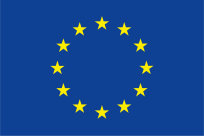Summary description
Abstract: "Coastal wetlands have been valued for a variety of ecosystem services including carbon sequestration and long term storage. The carbon sequestered and stored in coastal habitat including mangroves, salt marshes, and seagrass beds is termed as blue carbon. However, these systems are threatened mainly due to sea level rise, limited sediment supply, edge erosion, and anthropogenic influences. These habitats require restoration and conservation to continue providing ecosystem services. The incentive for emission reductions, referred to as carbon offsets, is well established for other ecosystems like forestry and agriculture. Some blue carbon offset methodologies or protocols have been certified by various voluntary carbon markets; however to date, a few wetland restoration carbon offset in the US has been transacted. Thus, the goal of this paper is to discuss the existing carbon market and carbon market methodologies applicable to coastal wetland restoration and conservation in the US. Currently, four wetland carbon offset methodologies have been approved in the carbon market. These methodologies are site and/or project-specific depending on the type of the wetlands, vulnerability to loss, and restoration need. The appropriate carbon stock and Green House Gas (GHG) emission assessment is the basis of determining carbon offsets. Simplification of the existing methodologies and development of new site and project-specific methodologies could potentially help to realize blue carbon offsets in practice. The slowly growing demand for carbon offsets in the carbon market could potentially be fulfilled from the blue carbon pool. While this carbon offset is in the early stages, this review may help the inclusion of carbon offset component in the coastal restoration and conservation projects in United States and potentially across the globe."
Quality assurance
review
License
free

